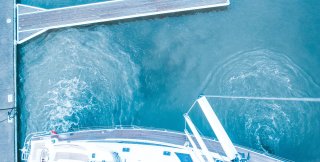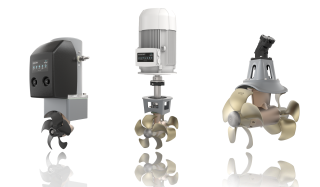Pros and cons of different thruster solutions
There is a vast array of boats in various shapes and sizes. Luckily, there are now bow and stern thruster solutions available for almost all types of motorboats and sailing yachts.
Traditional thrusters continue to dominate the market
Despite the availability of thruster solutions for different types of hulls, traditional tunnel thrusters still dominate the market. However, if there is limited internal space for a standard thruster, there are still several less commonly known options available. In this article, we will examine the pros and cons of thrusters for tunnel installation, retractable thrusters, and external thrusters.
Tunnel thrusters
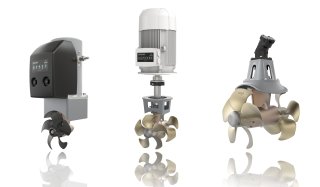
If you can have the space, a well-made and professionally installed tunnel thruster is the best choice.
However, it's crucial to ensure that your boat has enough internal volume and bow/stern access to accommodate the installation correctly. The submerged tunnel's position relative to the waterline is critical for optimal thruster performance and noise reduction.
Today's tunnel thruster options are fantastic, and if you choose a reputable manufacturer, you can choose a PRO™ system that allows you to control your thrusters with precision, similar to how you would use the gas pedal in a car, providing total close-quarters maneuverability and single-handed control.
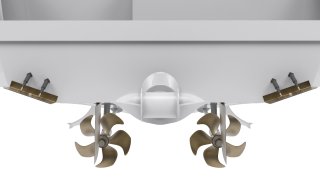
Pros:
- Solid construction with few moving parts
- Wide range of choices available
- Good value for money compared to other options
- It can help stiffen and add structural integrity to the hull
- Troubleshooting and maintenance on the motor and coupling can be done without lifting the boat
- Some systems come with protection against ignition and water ingress
- No reduction in boat speed when the tunnel is correctly installed
Cons:
- GRP work is needed and professional fitting is strongly recommended
- Requires sufficient internal space for installation
- The tunnel must be located a minimum of ½ to 1 times its diameter beneath the waterline
- Some noise emissions are possible unless the tunnel is optimally installed.
Retractable thrusters
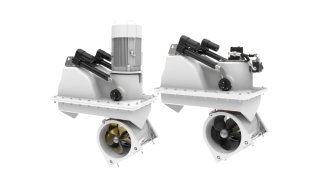
Retractable thrusters are becoming increasingly popular and can be placed in either the bow or stern locations of a hull. They are discreet and are particularly useful in bespoke yachts and flat-bottomed boats where the minimum draft required to install a traditional tunnel thruster is not available.
The propellers used in retractable thrusters are housed in shorter tunnels, which are more efficient and less noisy compared to traditional tunnel installations. The best retractable thrusters come with protection against running aground, and some can be controlled using proportional control.
Pros:
- Ideal for flat-bottomed sailing yachts
- Efficient thrust due to the good depth and shorter length tunnel
- Often low or zero noise
Cons:
- More complex construction than other types
- Requires a larger internal footprint compared to the size of the tunnel
- Some delay during deployment
- More vulnerable to damage due to external protrusion
External thrusters for displacement and semi-planing hulls
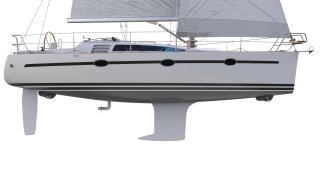
An external bow thruster is a torpedo-shaped solution mounted underneath a boat’s hull. These thrusters are perfect for boats with little internal space or for owners of smaller and less expensive crafts who might find it difficult to justify the cost of installing a ‘full-fat tunnel or retractable thruster.’
These thrusters have the propeller and electric motor enclosed in a hydrodynamic housing, which reduces drag and makes drilling small holes for the mounting shaft and internal cabling less costly and more convenient. Moreover, due to their positioning at the outermost extremities of a hull, these thrusters benefit from an increased leverage arm, which means they are able to move larger size boats by requiring nominally less power than conventional thrusters.
A well designed external thruster has hydrodynamic capabilities that adds minimal drag. It is often compared to the same added drag as a folded propeller for sailboats and will, in most installations, not be noticeable
However, if you regularly launch and recover your boat using a trailer or store your boat ashore on a raised stack system, you will need to consider that there’s an additional appendage protruding from the lower half of your hull. Additionally, external thrusters are not recommended for planing hulls and may cause increased water resistance and associated drag.
Pros:
- Requires minimal interior space in a boat
- Easier and faster to install and perfect for retrofit
- Higher efficiency due to optimum positioning
- Quiet operation
- Long run-time due to effective water cooling of the motor
- Can also be mounted as stern thruster, even in dual configuration to achieve higher thrust power
Cons:
- Not recommended for planning hulls
- Care is required when lifting the hull out, re-launching, or storing the boat ashore
External stern thrusters
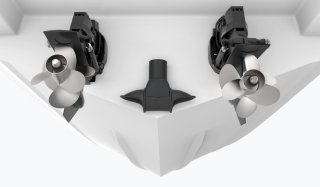
An external stern thruster is the best solutions for motorboats with limited internal space in the back and may allow installation in boats that previously could not fit a standard stern thruster that are mounted through the transom with the motor inside.
The installation require no GRP work and only three small holes for the mounting shaft and internal cabling, making the overall installation less costly.
Most external stern thrusters can be fitted with hydrodynamic cowls to redirect the water flow away from obstacles on the transom, or if the placement are a bit to shallow related to the water line. They can also be fitted with protective grids which might be a good idea if the boat are used for waters sports.
Pros:
- Requires minimal interior space in a boat
- Easier and faster to install and perfect for retrofit
- Quiet operation
- Long run-time due to effective water cooling of the motor
Cons:
- Actually none we can think of
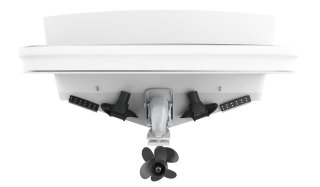
Overall, with the different thruster options available today, boat owners have a wider range of choices than ever before. It's no longer necessary to follow a 'one boat, one rule' system.

